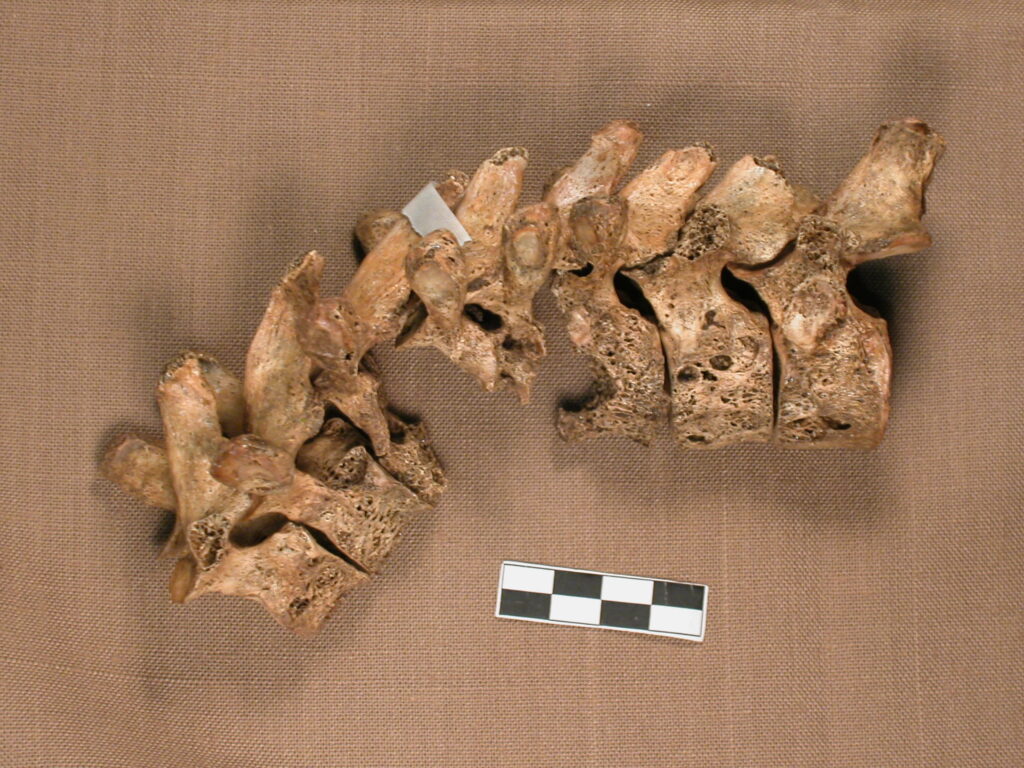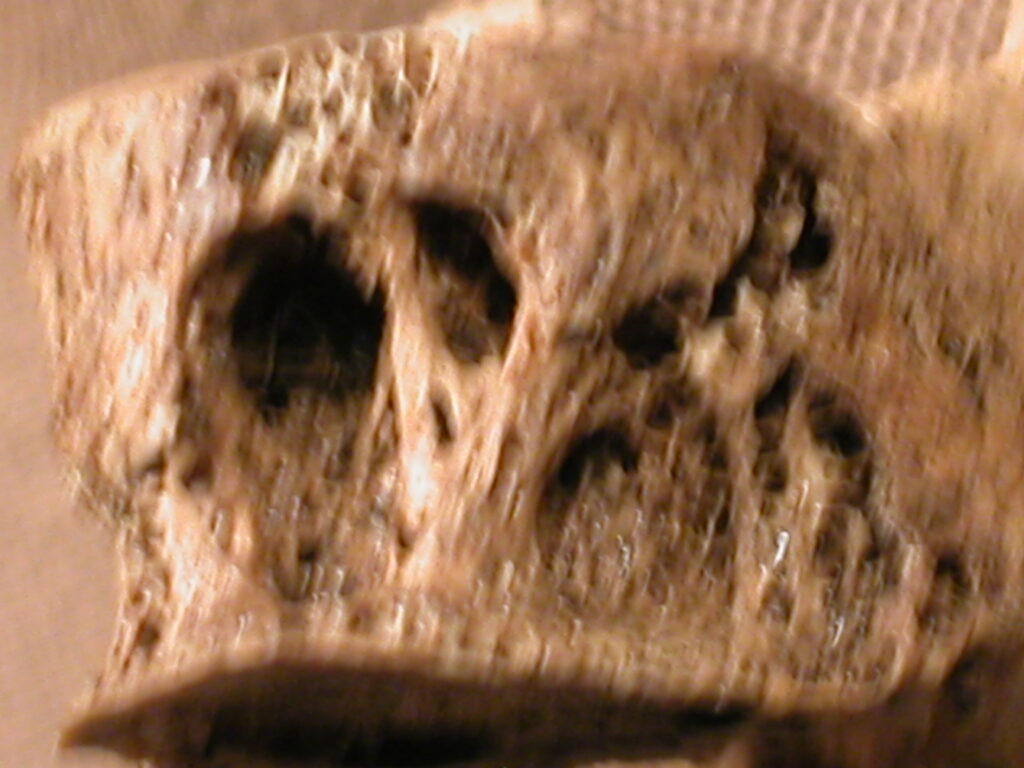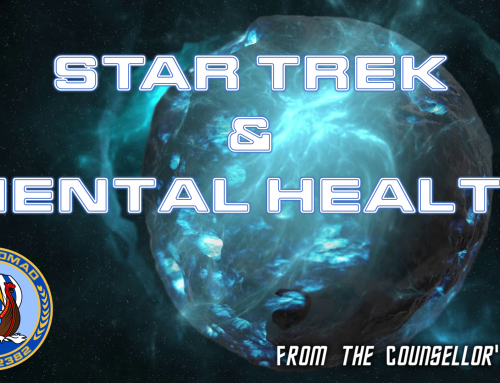First Officer’s Log, Supplemental
Lt. Frazetti has assumed the position of Chief Medical Officer and is preparing an ample supply of medical logs for the ship. Due to the level of expertise required for this position, I feel an introductory interview is in order.
I understand you have an impressive academic background. Could you tell us about your studies in biology, pre veterinary medicine, and anthropology?

Additionally, I often have worked for my own veterinarian when there have been school breaks, or if he has days he may need someone to fill in and I am available. This has led to access to the annual Western Veterinary Conference seminars in Las Vegas, as well as certifications I maintain in small animal emergency first aid and CPR, and in small animal nutritional disease management.
You mentioned having your graduate work completed in infectious diseases. Can you explain to us what paleopathology entails?
Paleopathology focuses on the origin and evolution of infectious diseases in prehistoric populations. It entails examining dry bone and looking for distinct markers of disease conditions. I have also used a good deal of radiology for my work, along with DNA analysis to investigate microbial data remaining on damaged areas of bone.
Paleopathology therefore provides insight into the lifeways and occupational habits/technologies of past cultures, their diets, gender and occupational roles, and environment. The diseases in a population can reveal quite a bit about the culture and environment, including migratory habits. It can help us understand where a disease originated and understand how it was passed along , how it may even have muted along the way. One fun one is always the spread of leprosy.
- Vertebra with signs of Tuberculosis
- Probably blastomycosis
Fun tips:
Do you want to know if someone had survived a scalping perhaps? Well, if the healed bone is present around the cranium, and tertiary syphilis is present, they survived the scalping and lived long enough to contract syphilis to die from that and not the scalping. Fun stuff !
An orange peel type surface to a cranium and pitting in the orbitals is a sign that someone suffered from childhood anemia. Check any teeth – they may have lines/ rings. The bone was remodeling in response to anemia . The lines on the teeth indicate periods of interrupted growth and poor nutrition as well.
- Eye Socket pitting from Anemia showing signs of Porotic Hyperotosis
- Example of Cranial Anemia
When it comes to small animal first aid, what kind of certifications do you have?
I hold a certification in small animal emergency first aid and CPR. I renew it every 2 years. It is from Pet Emergency Education ( petemergencyeducation.com) .
Crewmeown Toby and Crewmeown Fred have come aboard with you. Will they be aiding you in your duties?
Oh of course Crewman Toby and Crewman Fred will be aiding me in my duties. They supervise and tell me when it is time to take a break from work to tend to their needs.
Did your affinity for your feline companions play a part in your pursuit for earning these small animal certifications?
Yes indeed. Originally , years ago, any certifications were earned since I was in pursuit of a veterinary career path. It did also benefit my own feline companions of course, being more knowledgeable about their care and being able to assist them if need be.
Today, I remain interested in feline health and wellness due to my own companions, yes. However, it also has continued to be valuable knowledge with respect to my fostering work , and any work I may still do from time to time at the clinic.
You certainly have a lot of experience. Do you teach any adult or children’s health courses?
I have done a combination of both. I began as a subject tutor for individuals and groups at UMass in math, science, and anthropology. I subsequently also worked in the disability ( adaptive) computer labs, skills which have been valuable throughout my teaching career. At the graduate level, I was initially a TA in Illinois, but then obtained my first teaching position at the community college nearby, teaching in biology, then also in anthropology. I also taught in environmental sciences. Once in Nevada, I again worked as a TA, in the anatomy and physiology labs. Shortly after my first semester, I took the position at a local community college , teaching in both biology and anthropology, as well as tutoring in math. The college also began a summer program for kids a few years ago, Kids College. I developed curriculum for children age 7-14 and worked with them in math, science, and anthropology areas. Such courses included : Space Math, Forensics, Science of Superheroes, Digs for Kids Archaeology, Food and Health for Kids, Environmental Science. I also taught environmental sciences for the local camps associated with the forest service a few times over the years. Our Community Education department had me develop adult courses in: Food and Health, Nutritional Supplements, Prehistory of the Great Basin, Great Basin Archaeology, and Anthropology of Science Fiction.
Thank you for taking the time to introduce yourself and we look forward to reading your work in the near future.
Thank you and it is good to be here and be a part of this crew. I would like to add, that if anyone would like to suggest topics, to please contact me ( insert an email…) and let me know. My hope is to cover a wide range of topics over the course of my time with this ship. I am also glad to provide resources via email if anyone has an interest in any particular topic they see in my blogs or for personal interest.
End log.







![MEDICAL EMERGENCY ON MINOS KORVA [Part 1]](https://ussrenaissance.ca/wp-content/uploads/2022/05/Medical-Supply-List-500x383.png)
![MEDICAL EMERGENCY ON MINOS KORVA [Mission Briefing]](https://ussrenaissance.ca/wp-content/uploads/2021/03/USS-Nomad-Medical-Log-500x383.jpg)


Are you a human or an emergency medical hologram?
EMH